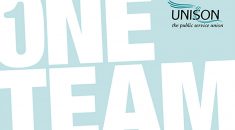Safe staffing levels across the NHS have worsened significantly in the last year, according to UNISON’s UK-wide annual survey of nursing professionals published today (Monday), at the start of its annual health conference in Brighton.
The 2016 survey, conducted on Tuesday 9 February, found that almost two-thirds – 63%, up from 45% the previous year – of respondents said they felt there were inadequate numbers of staff on the wards to ensure safe, dignified and compassionate care.
Two-thirds (67%) of those responding believed staffing levels had got worse in the year since UNISON’s 2015 survey. A similar number (68%) had considered leaving their role in the previous 12 months.
Pushing the Call Button on Unsafe Staffing: Who Will Come to our Aid? was conducted after the government put a stop to the National Institute of Clinical Excellence’s (NICE) work into safe staffing levels. Almost three-quarters (72%) of health workers who responded to the survey were worried that staffing levels would worsen and patient safety suffer as a result of the decision.
Last autumn ministers announced a cap on the amount trusts could spend on agency staff – nearly four in ten (39%) felt this had affected staffing levels in their workplace.
More nursing staff were also looking after eight or more patients – the level at which research suggests harm can occur – that day than the previous year. More than half the 2016 respondents (56%) had eight or more patients to look after. In 2015 it was four in ten (42%).
The situation was much worse for staff that worked a night shift that day in February. Seven in ten (71%) working that evening said they were looking after more than eight people, up from 55% in 2015.
This is despite more than six in ten (61%) working through their breaks that day to make up for the lack of colleagues, and four in ten (41%) working more than their contracted hours.
With too few staff on duty, more than two-thirds (70%) reported not having enough time to spend with each patient. Three-quarters (75%) said because they were so busy, there was no time to comfort or even talk to patients.
Nearly half (47%) the survey respondents thought their organisations were at serious risk of a care failing developing, and more than one in ten (15%) felt that care failings were already happening in part, or across, their workplaces.
UNISON head of health Christina McAnea said: “Two recent government decisions have made matters much worse for the NHS, its staff and its patients. Ending NICE’s safe staffing work was a mistake, and the introduction of the agency cap has meant even fewer staff on the wards.
“Health workers are being run ragged, trying to provide safe, compassionate care to all their patients, but are struggling because there are quite simply too few of them to go around. It’s no wonder so many are seriously considering leaving the NHS.
“Nurses and midwives should not have to ration their time and make the difficult choice as to which patients receive care and which miss out. Even working through their breaks and staying late or coming in early isn’t enough. It’s unfair for staff to be in this position and it puts patients at risk.
“Increasing demands on the NHS show no sign of letting up, and despite all ministers’ talk of protecting the NHS, the desperate situation painted here by health professionals across the UK looks set to continue.
“But it doesn’t have to be this way. Instead of starving the NHS of cash and picking fights with health professionals, ministers should be introducing minimum nurse to patient ratios. This would not only relieve the pressure on the NHS’ already overworked and overstressed workforce, but would significantly improve the quality of patients’ hospital experiences too.”
Key findings in Pushing the Call Button on Unsafe Staffing: Who Will Come to our Aid? include:
Almost nine in ten (89%) support national mandatory minimum nurse-to-patient ratios.
Nearly two-thirds (63%) felt there were not adequate staff numbers to deliver safe and dignified care.
Six in ten (61%) were unable to take all or some of their breaks that day.
Seven in ten (70%) reported not having an adequate amount of time with each patient.
Three-quarters (75%) said a lack of time meant they were unable to comfort or talk to patients.
More than half (56%) were looking after more than eight patients.
Almost three-quarters (72%) felt that the decision to suspend NICE’s work on safe staffing would see staffing levels worsen and patient safety suffer.
Almost four in ten (39%) said that the introduction of the cap on agency spending had affected staffing levels.
Nearly seven in ten (68%) had considered leaving the NHS in the last year.
Four in ten (41%) worked over their contracted hours, with three-quarters (75%) putting in up to an hour of extra time, with only one in ten (10%) being paid for this.
Comments included in Pushing the Call Button on Unsafe Staffing: Who Will Come to our Aid? were:
· “Unsafe and unworkable staffing levels remove all reward from what should be a role in which you feel the value of your work.”
· “We have had crisis staffing levels for the past six months. It has been very unsafe for staff and patients. It has become extremely difficult to work in these circumstances.”
· “On night shifts, staff nurses are having 1:18 ratios, which is dangerous and unsafe practice. This results in falls, injuries or putting other patients at risk.”
· “Due to unsafe staffing levels and increased volume of patients, my workplace in A&E has become unsafe.”
Notes to editors:
– Research has shown that one registered nurse to eight patients, excluding the nurse in charge, is the level at which harm starts to occur to patient care http://www.thelancet.com/journals/lancet/article/PIIS0140-6736(13)62631-8/abstract
– UNISON’s survey is now in its fifth year and was carried out on 9 February 2016. It received 2,700 responses from staff performing different roles across the nursing family. The survey had responses from every part of the UK, and across all shift and workplace types.
– The areas of care in which respondents worked on 9 February 2016 covered the whole spectrum of healthcare – A&E, paediatrics, elderly care, community mental health, critical care, general practice, learning disabilities, medical, mental health, obstetrics and gynaecology, surgical, rehabilitation and theatre.
– Pushing the Call Button on Unsafe Staffing: Who Will Come to our Aid?
Media contacts: Liz Chinchen M: 07778 158 175 E: l.chinchen@unison.co.uk
Sophie Goodchild M: 07767 325595 E s.goodchild@unison.co.uk





